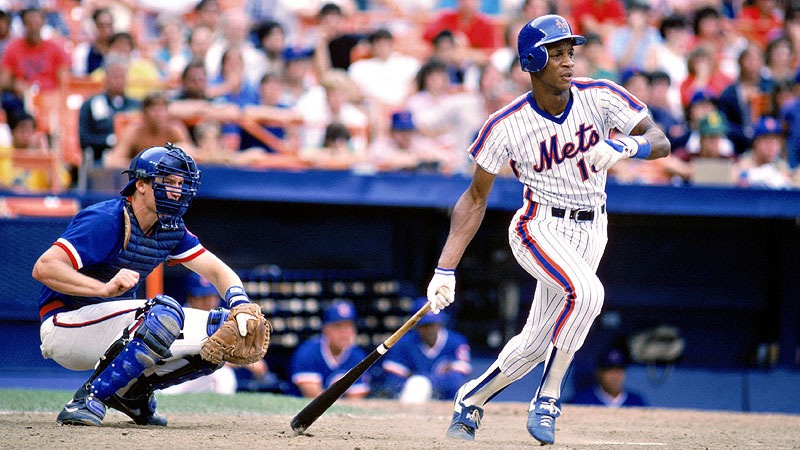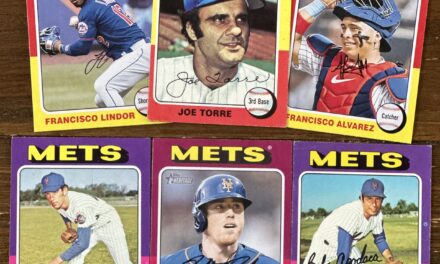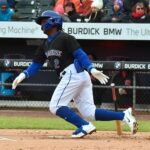
In this series leading up to the MLB Draft on July 17, we’ll look back at the backgrounds of some notable Mets picks prior to their arrival in the big leagues. We begin with the No. 1 overall selection 42 years ago.
With a smooth hitting motion, Darryl Strawberry belted out 252 homers and drove in 733 runs for the New York Mets. With swift legs, he stole 191 bases. He made seven All-Star teams in eight seasons and won a World Series in 1986. He remains the greatest power hitter the team has ever produced and among the franchise’s greatest players, but he should’ve been one of Major League Baseball’s all-time greats. It was those kinds of expectations that surrounded Strawberry before the Mets made him the top pick in the 1980 amateur draft.
Darryl was tall and lean, blessed with a sweet name and a sweeter swing. A Sports Illustrated feature compared the 18-year-old Strawberry to Ted Williams. With a thoroughbred build and a swift upper-cut made for home runs, he had all the makings of the revered “five-tool player.”
Strawberry was not unlike other African-American males in Los Angeles who were raised in poverty-stricken households, where sports offered a chance to break away from the cultural and economic restraints imposed on them by their surroundings–not to mention constant family turmoil. His father was a negative influence during Darryl’s formative years and suffered from many of the same vices that would later plague Darryl. He was often in fear of his dad, as were his brothers and his mother.
“It was pure joy for me to play baseball, basketball, and football. While I was playing I could almost forget my anger and my troubles. Almost,” Strawberry said in his autobiography.
Darryl was a multi-sport star at Crenshaw High School, with his potential as a baseball player being “unlimited.” But while Strawberry was the unquestioned top performer, he was not alone when it came to a future in the majors. Nine members of the Crenshaw Cougars during Darryl’s junior season were drafted and two eventually made it to the big leagues.
Strawberry faced several who would go on to athletic success on the professional level: John Elway, Bret Saberhagen, Jay Schroeder, and Eric Davis. Elway, using his arm to pitch rather than pass, beat Strawberry and Crenshaw for the 1979 Los Angeles City Championship.
Meanwhile, the Mets’ limitations during the 1970s were abundant. They were last in offense, last in attendance, and last in the National League East.
In 1979, there wasn’t a team worse in all of baseball. Their reward was the No. 1 overall choice the next year. As hard as the recent past had been for the Mets, picking Darryl Strawberry on June 3, 1980 was easy for new general manager Frank Cashen, who was in search of a young superstar to serve as a significant building block for a long rebuild.
Strawberry’s climb up the minor league ladder was initially slow. Beginning with the Mets’ rookie-level Appalachian League club in Kingsport, TN, Darryl often arrived late to the ballpark. One time, missed a game completely. A player of lesser status would’ve received a stern reprimand. But because of his promise, his absence was largely ignored. His talent was too good to discount.
Things didn’t get better when he was on the field. He was a victim of racial slurs. In 1980, he hit five homers in 180 plate appearances and batted .268. He was lonely and homesick, so much so that he often phoned his mother. High-A Lynchburg in 1981 was more of the same, lacking the contact needed to utilize his immense power. But it began to click for Double-A Jackson.
Although he struck out 145 times, he drove in 97 runs and hit 34 homers. To accelerate his development, the Mets had Strawberry play winter ball in Venezuela. And as the 1983 season got underway in Triple-A Tidewater, he was quickly proving ready for the jump to the majors. Cashen was hesitant at first, but clamoring from fans and media alike in New York was overwhelming, especially since the Mets were already in the cellar with few at Shea showing interest. On May 6, 1983, the Mets unveiled their shiny new toy in an MLB showroom.
Because of his incredible talent, Darryl Strawberry left us wanting more. With better understanding of the complexities that come with being a young superstar in New York City, his Mets career has more context. And still atop the leaderboard in home runs and adjusted OPS than anyone, it’s one of the best in franchise history.















